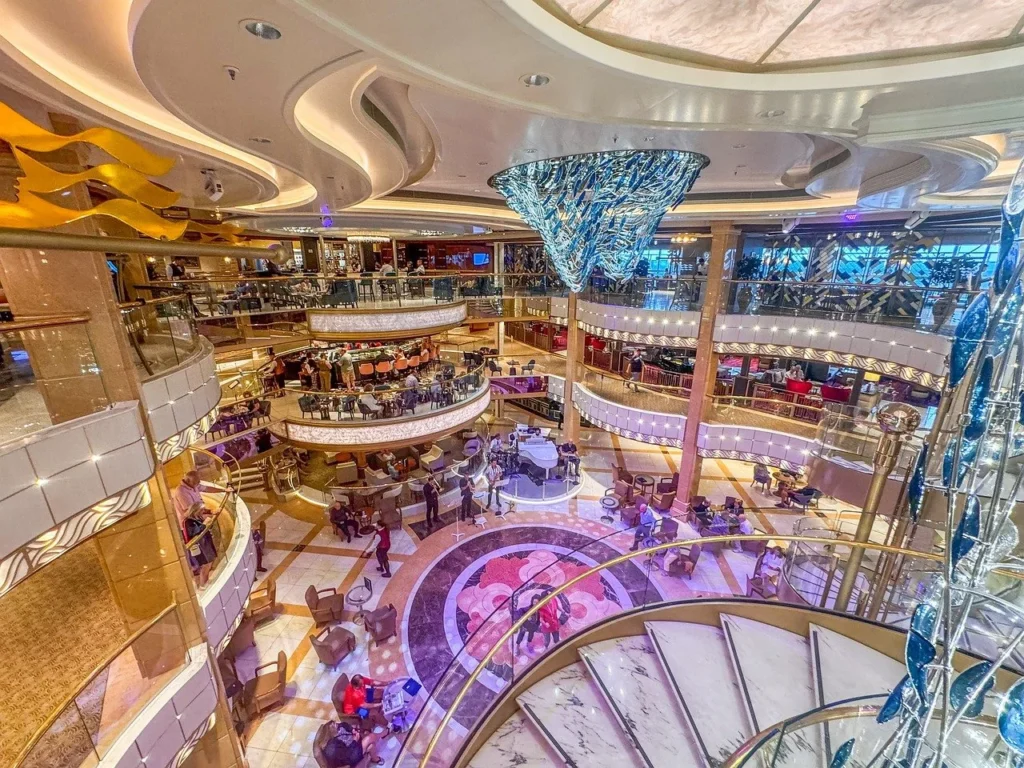Embarking on your first cruise is an exciting adventure filled with endless opportunities to relax, explore new destinations, and indulge in top-notch dining and entertainment. However, with all the excitement comes a bit of uncertainty—especially if you’re unfamiliar with cruise culture or how things operate at sea. Fear not! This guide will help you feel prepared and make the most of your maiden voyage.
On the page:
Planning Your Cruise: Timing, Budget, and Choosing Wisely
One of the first things to decide is how long your cruise should be. For first-timers, a shorter itinerary of about 3-5 days is a perfect way to test the waters (pun intended). These trips offer a taste of the cruising experience without a lengthy commitment. If you’re ready for a more immersive experience or if your destinations are far-flung, a 7-day cruise can be just right. It allows for multiple stops and more time to explore everything the ship has to offer.
Planning is key when it comes to cruising, and booking 6-12 months in advance generally gets you the best deals and cabin choices. It’s also easier to save money for excursions, shopping, and those unexpected indulgences. That said, if you’re a bit of a spontaneous traveler, you can often find last-minute deals, especially if you’re flexible about the cruise line, destination, or cabin type.
Speaking of money, a common question is, “How much should I budget?” Well, cruising has a reputation for being an all-inclusive experience, but there are still extra costs. Aim to budget $100-$150 per person per day. This covers drinks (if you don’t have a drinks package), shore excursions, specialty dining, gratuities, and a few souvenirs. If you plan to enjoy spa treatments, premium experiences, or extensive shopping, be prepared to spend more. As for whether to carry cash or cards, bring both. Most onboard transactions are cashless, but cash is helpful for tipping and shopping in local ports.
Packing Smart: What to Bring and What to Leave
Packing for a cruise requires a bit more thought than a typical vacation. You’ll want to bring everything from swimwear and casual outfits to evening attire for formal nights. Most cruises have at least one or two dress-up evenings, especially on 7-day itineraries, so pack a couple of nice outfits. During the day, casual, comfortable clothes are your best bet, and don’t forget a lightweight jacket or sweater, as the evenings can be cooler at sea.
To combat motion sickness, pack some over-the-counter remedies like Dramamine or Bonine, and consider natural alternatives like ginger candies or acupressure bands. If you’re particularly prone to motion sickness, talk to your doctor before your trip. Preparing your stomach is especially important if you’ve never been on a ship before.
What to Expect Onboard: Day One and Beyond

The first day of your cruise is exhilarating but can also be a bit chaotic. As you board, you’ll likely be greeted by a whirlwind of activity. Start by grabbing your ship’s map and exploring your surroundings. Your luggage may take a few hours to arrive at your cabin, so pack a small carry-on with essentials, like a swimsuit, toiletries, and a change of clothes. Many travelers make it a tradition to grab lunch at the buffet right away. After all, part of the cruise experience is sampling the vast array of culinary options.
Once you’ve settled in, familiarize yourself with the ship’s layout. Larger ships are like floating cities, complete with pools, theaters, multiple restaurants, and even zip lines or skating rinks. Check out the daily newsletter or app (most cruise lines have one) to plan your activities. The first day is also when you’ll have a mandatory safety drill, which is a crucial part of understanding what to do in an emergency.
Dining on a cruise ship is one of the highlights, and yes, you can eat almost all day if you wish! Buffets, casual dining spots, and room service make it easy to grab a bite whenever you’re hungry. On most ships, the main dining room and buffets are included in your fare, but specialty restaurants, which can be a memorable culinary experience, may come with an extra charge. If you get hungry late at night, check what’s available—some cruises even have 24-hour pizza or snack bars.
Cruise Culture: Dress Codes, Social Scenes, and Must-Dos

Whether you’re cruising solo, with friends, or with family, there’s always something to do. Solo travelers often find cruises to be an enjoyable experience, with opportunities to meet new people through mixers, group excursions, and solo meet-ups. Most cruise lines are very welcoming to single travelers, and some even offer adult-only sections or cruises, which are great if you’re looking for a more mature crowd.
Dress codes can vary widely by cruise line, but the majority still uphold the tradition of “formal nights.” This can mean anything from a cocktail dress and suit to full-blown ball gowns and tuxedos, depending on the ship. If dressing up every night sounds like too much, don’t worry; many dining options are more casual. Just be sure to check the guidelines before you go, as some areas, like the main dining room, will have specific requirements.
Spending Money Onboard: Cards, Cash, and Clever Savings
One question that comes up often is how money works on a cruise. Most transactions onboard are made using your ship-issued card or wristband, which you’ll link to a credit card. This system is convenient, but it’s easy to lose track of how much you’re spending. Review your account periodically and be mindful of extras like drink packages, internet fees, or special events.
For excursions and shopping at ports of call, cash is helpful. Some places may not accept credit cards or charge fees for international transactions. Depending on your itinerary, having small bills handy for tipping guides or local vendors is wise.
To save money, consider booking excursions independently rather than through the cruise line—though this does come with a small risk, as you need to manage your time carefully to get back to the ship on time. Also, watch for drink specials and happy hours, or buy a drinks package if you plan to indulge frequently. The cheapest months to cruise are generally during the “shoulder seasons,” like late spring and fall, when demand is lower.
You may also like: 8 Facts about Repositioning Cruises: The Hidden Gems of the High Seas
Staying Healthy: Dining and Digestive Care

Eating is a big part of the cruise experience, and yes, you can indulge from the moment you step on board. Just be mindful of overeating or trying unfamiliar foods all at once, as your stomach might not be used to the constant motion of the ship. The first couple of days are critical for getting your sea legs, so stay hydrated, avoid greasy or heavy meals, and have a light breakfast before hitting the buffet.
If you experience stomach trouble or, worse, diarrhea, the ship’s medical center is equipped to help. On most cruises, basic medical treatment is available, though it can be costly, so travel insurance is a good idea. Room service is another great option if you’re not feeling well; in fact, many people enjoy taking food back to their cabins to enjoy on their private balconies (if you have one).
Is a Balcony Worth It?
Ah, the age-old question: to splurge on a balcony or not? For many, having a private outdoor space to enjoy ocean views is worth every penny. It’s particularly valuable if you’re on a scenic route, like an Alaskan or Mediterranean cruise. However, if you plan to be off the ship exploring most of the time, an interior cabin might be just fine and more budget-friendly.
Final Thoughts on Your First Cruise
Cruising offers a unique way to see the world, with your floating hotel taking you to multiple destinations without the hassle of constant packing and unpacking. It’s an experience filled with adventure, luxury, and the chance to meet people from all walks of life. So pack smart, plan wisely, and get ready for an unforgettable journey at sea!
Sources:
- Cruise Line Information Websites
- Traveler Forums and Reviews
- Health and Travel Advisory Pages



